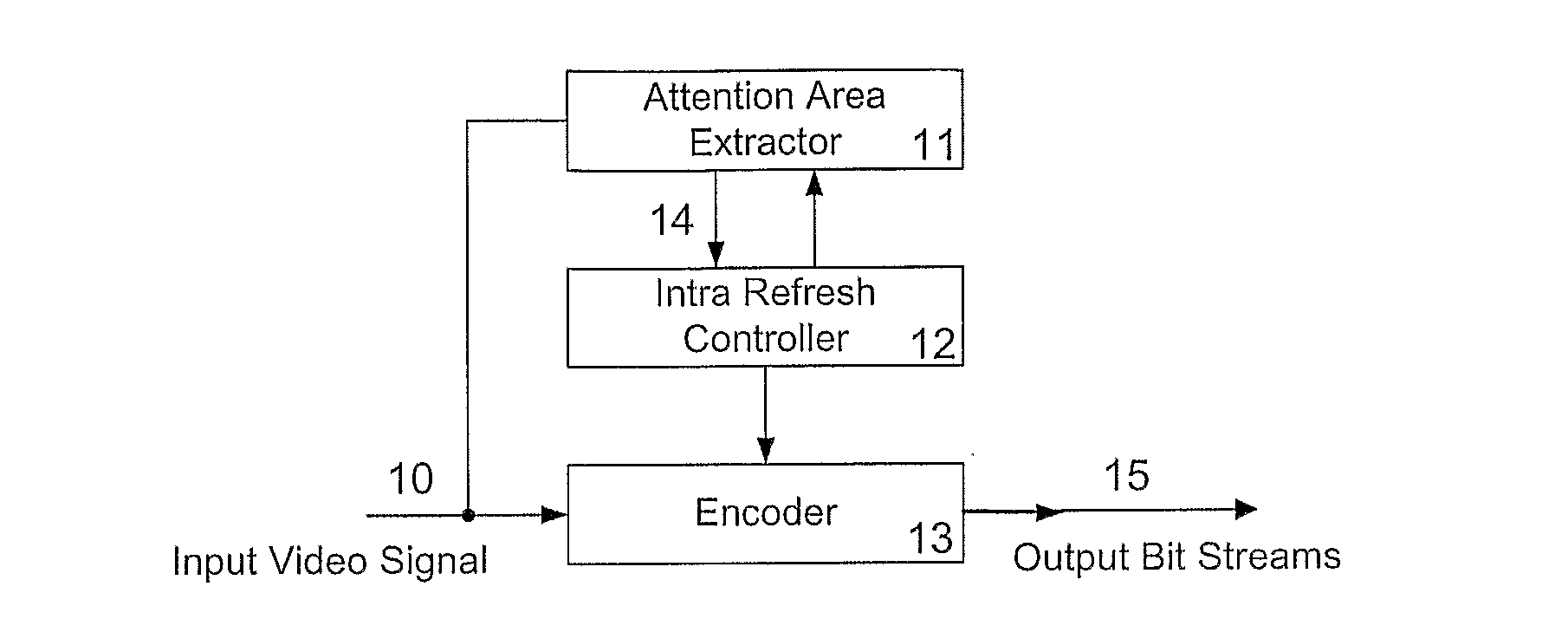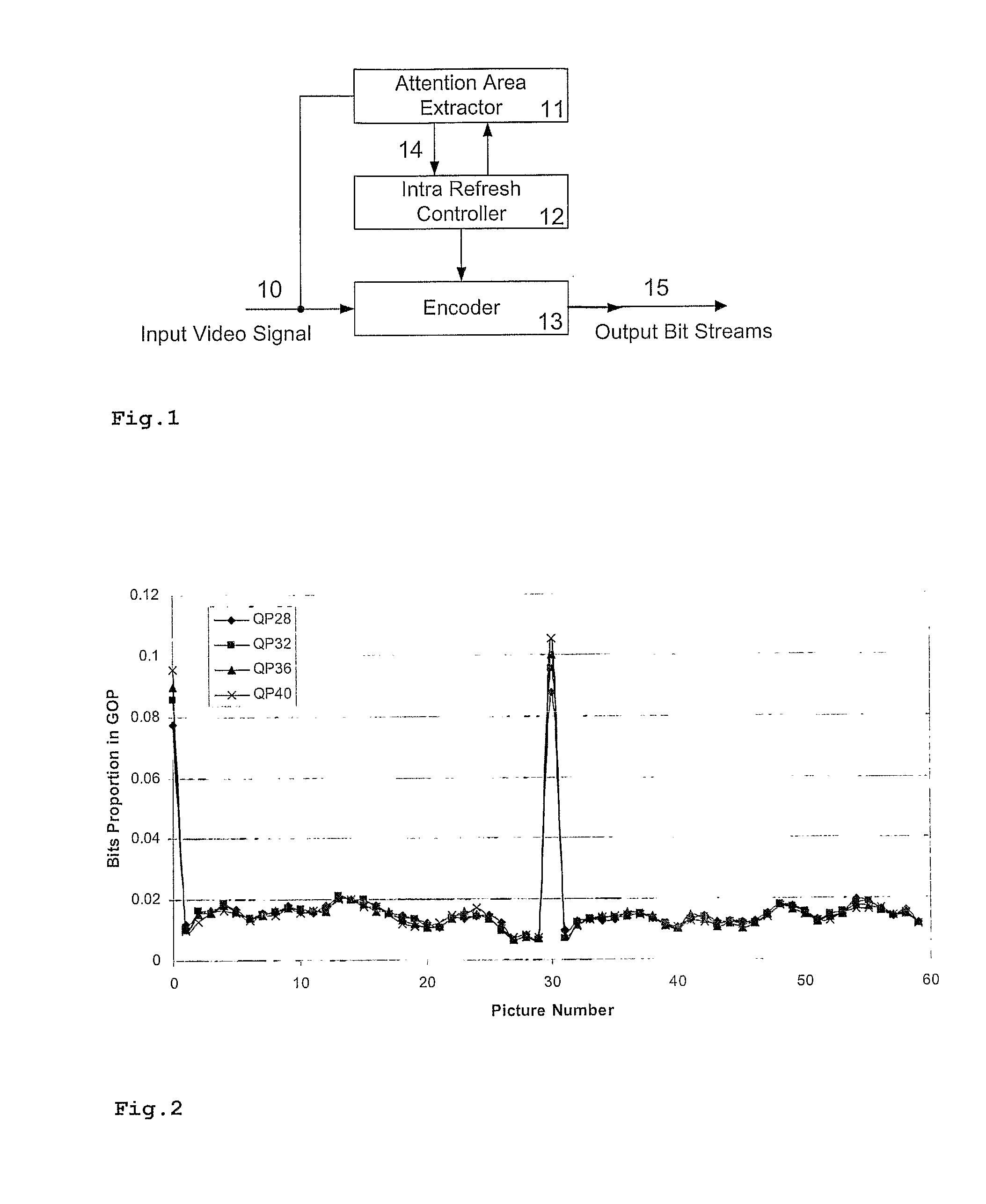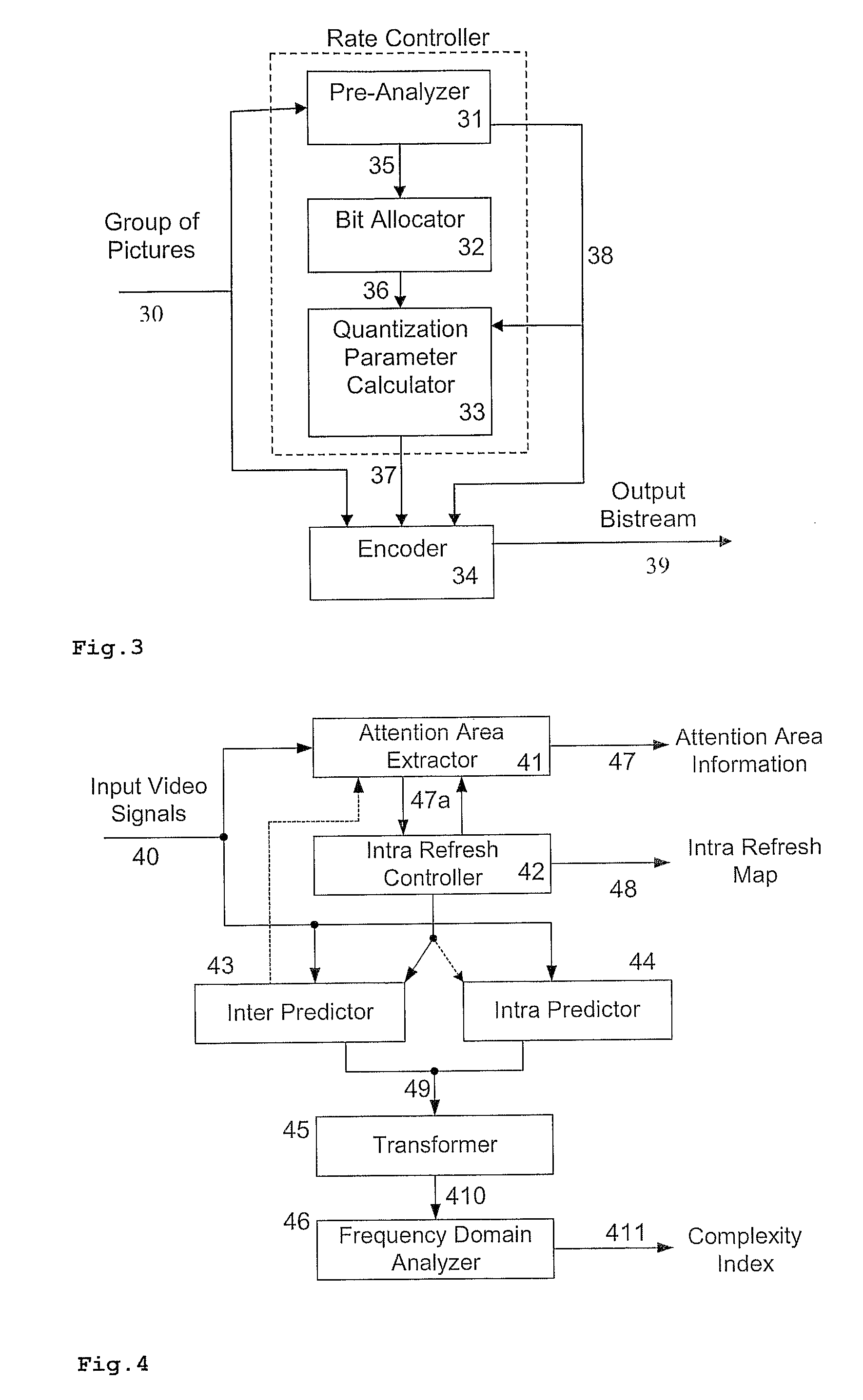Method and Apparatus for Adaptively Determining a Bit Budget for Encoding Video Pictures
- Summary
- Abstract
- Description
- Claims
- Application Information
AI Technical Summary
Benefits of technology
Problems solved by technology
Method used
Image
Examples
Embodiment Construction
[0031]FIG. 1 shows a conventional encoder with attention-area based intra refresh, as described above. Rate control is not considered due to the Intra refresh areas being locally and temporally variable, and thus difficult to predict. It has been observed that a coded bit stream with steady quantization steps in a series of consecutive pictures in a shot will provide a relatively smooth quality. Thus, a proper steady quantization step has to be found, which can generate the target bit rate in a group of pictures. However, when the quantization step is nearly constant, the generated bit rate is not constant for each picture, and hence it is better not to allocate the sane number of bits to each picture in the group.
[0032]However, it has been found that when coding with different constant quantization parameters (QPs) which reflects different bit rate, the bits proportion of each picture is almost the same, as shown in FIG. 2 for the well-known “foreman” sequence being encoded with di...
PUM
 Login to View More
Login to View More Abstract
Description
Claims
Application Information
 Login to View More
Login to View More - R&D
- Intellectual Property
- Life Sciences
- Materials
- Tech Scout
- Unparalleled Data Quality
- Higher Quality Content
- 60% Fewer Hallucinations
Browse by: Latest US Patents, China's latest patents, Technical Efficacy Thesaurus, Application Domain, Technology Topic, Popular Technical Reports.
© 2025 PatSnap. All rights reserved.Legal|Privacy policy|Modern Slavery Act Transparency Statement|Sitemap|About US| Contact US: help@patsnap.com



